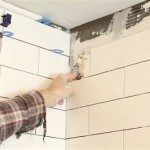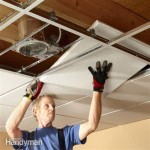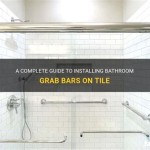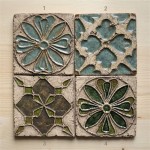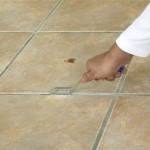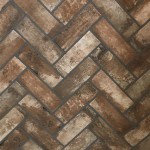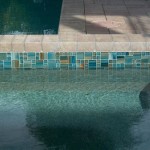Can You Put Plywood Over Tiles in Shower Panels?
Renovating a bathroom can be a daunting task, especially when dealing with shower panels. Replacing existing tiles can be time-consuming, messy, and expensive. A common question that arises is whether it's possible to simply lay plywood over existing tile to create a new surface for shower panels. While the idea seems appealing, it's crucial to understand the complexities and potential drawbacks before embarking on such a project.
Understanding the Challenges
Laying plywood over existing tiles in a shower panel presents several challenges that must be carefully considered. The primary concern is moisture. Shower areas are inherently prone to high humidity and moisture exposure, which can severely damage wood products like plywood. Plywood is not designed to withstand prolonged exposure to water, ultimately leading to warping, rotting, and potential mold growth. This damage can compromise the integrity of the shower enclosure and pose a safety hazard. Furthermore, the existing tile surface may not be entirely level, potentially creating unevenness that could impact the installation and longevity of the shower panels.
Alternative Solutions
While laying plywood directly over tiles is not recommended, there are several alternatives that can achieve a similar result while addressing the challenges. One option is to use waterproof backer boards that are specifically designed for wet areas. These boards, commonly made of cement or fiberglass, offer superior resistance to moisture and provide a stable surface for shower panels. Another approach involves removing the existing tile and creating a new base layer with a moisture-resistant material like cement board. This approach ensures a completely dry and level surface for the shower panels, eliminating the risk of moisture damage.
Considerations for Plywood Installation (If Absolutely Necessary)
In exceptional circumstances where removing the existing tile is impractical or impossible, installing plywood over tiles might be a last resort. However, it's crucial to prioritize safety and moisture prevention. The plywood should be treated with a waterproof sealant and installed with a waterproof membrane separating it from the tile surface. Additionally, proper ventilation and drainage are paramount to mitigate moisture accumulation. A thorough understanding of the limitations and risks associated with this approach is essential, as it involves potential compromises in the long-term durability and safety of the shower enclosure.
It's important to note that even with careful application, plywood over tiles in shower panels remains a less desirable option compared to other alternatives. Using waterproof backer boards or removing the existing tile and creating a new base layer provides a more reliable and long-lasting solution. Opting for a professional contractor with expertise in bathroom renovations can ensure the best outcome and minimize the risk of costly repairs in the future.

How To Prepare A Subfloor For Tile Installation The Home Depot

Plywood Walls Ceiling In Bathroom Advice

How To Tile A Bathroom Shower Walls Floor Materials 100 Pics Pro Tips

Tiling On Wooden Floors Part 4 Overboarding Bathroom Guru

How To Tile A Bathroom Shower Walls Floor Materials 100 Pics Pro Tips

Building A Shower Stall Road To Pitches

Tiling On Wooden Floors Part 4 Overboarding Bathroom Guru

Waterproof Laminate Bathroom Shower Wall Panels Innovate Building Solutions

Shower Waterproofing Week 3 Fall 2024 Orc

How To Install A Glue Up Shower Enclosure The Home Depot
Related Posts


